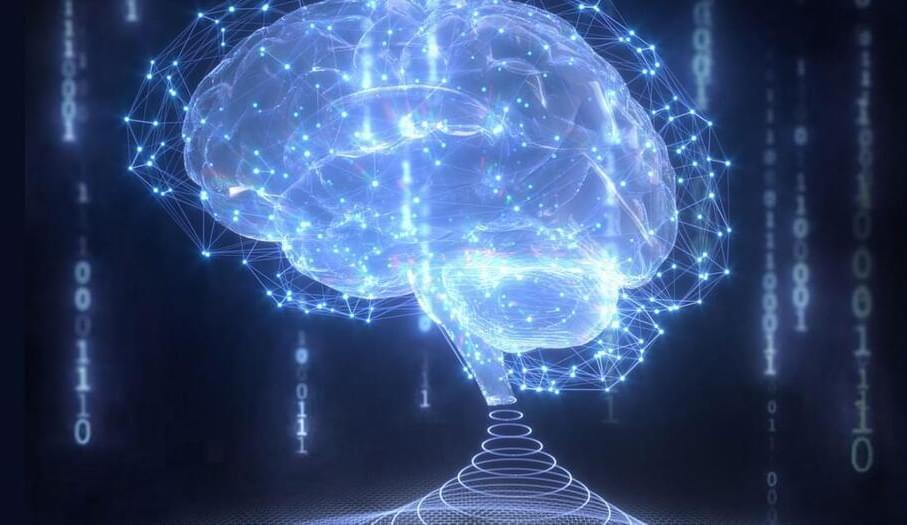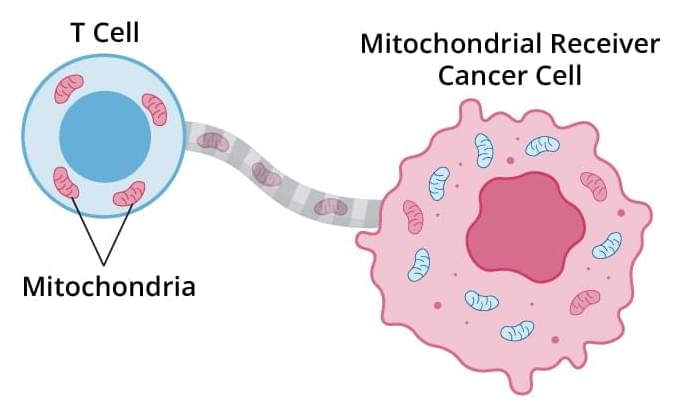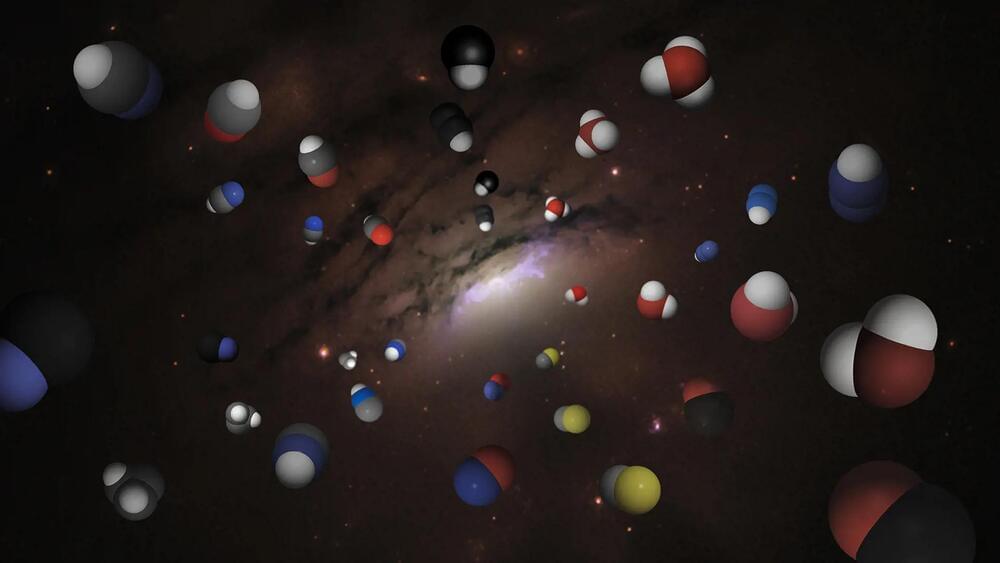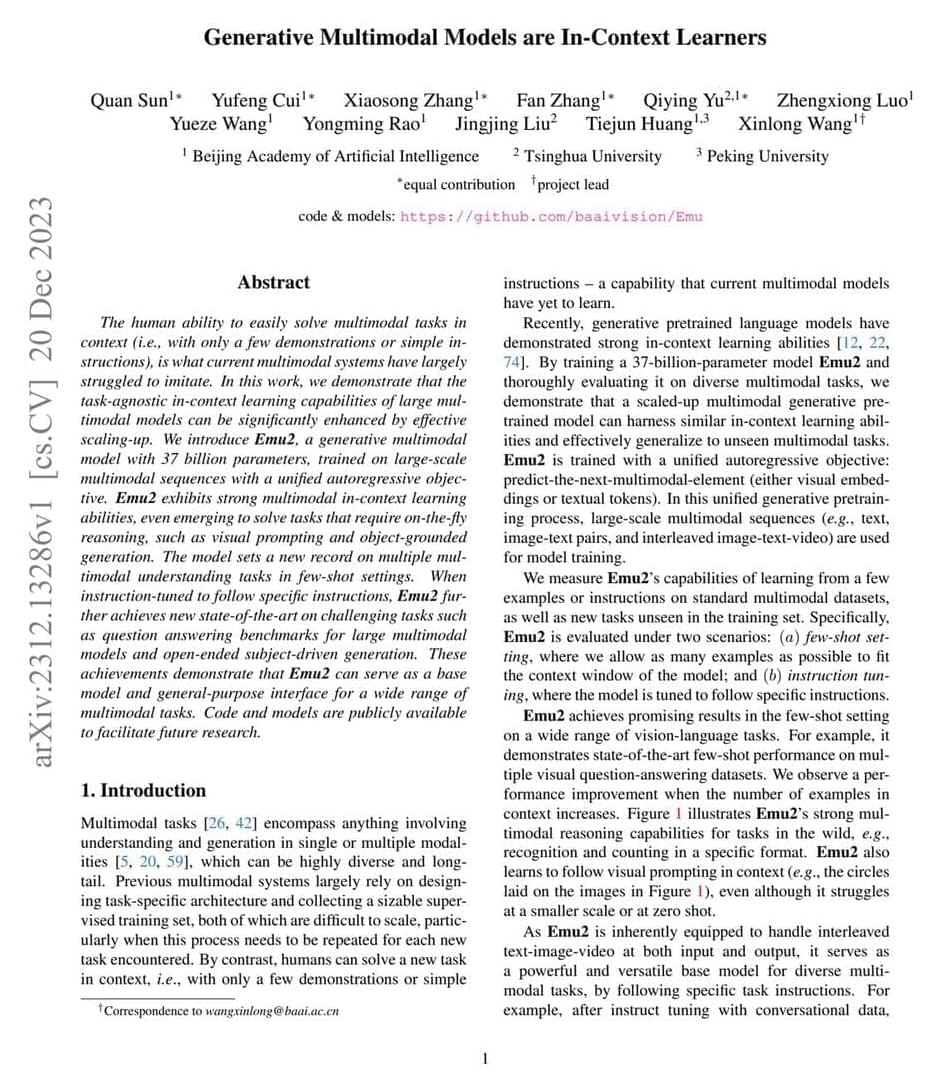Transistor performs energy-efficient associative learning at room temperature.
An artistic interpretation of brain-like computing. Image by Xiaodong Yan/Northwestern University.


In theory, the immune system can recognize cancer cells as foreign and destroy them. In practice, this is often difficult, particularly after a tumor has become established in the body.
And even when immune cells, especially certain killer T cells, make it into a tumor, they face a hostile environment. This can include molecules that can disable T cells, low oxygen, and a lack of nutrients for energy. The end result is often a dysfunctional state known as T-cell exhaustion.
Now, a new study has confirmed the existence of yet another way that tumors can thwart T cells. In some tumors, a subset of cancer cells can act like a thief siphoning fuel from a car’s gas tank: they drain mitochondria —the tiny structures within cells that produce energy—from T cells and use them for their own energy needs.

Two galaxies in the early universe, which contain extremely productive star factories, have been studied by a team of scientists led by Chalmers University of Technology in Sweden. Using powerful telescopes to split the galaxies’ light into individual colours, the scientists were amazed to discover light from many different molecules – more than ever before at such distances. Studies like this could revolutionise our understanding of the lives of the most active galaxies when the universe was young, the researchers believe.
When the universe was young, galaxies were very different from today’s stately spirals, which are full of gently-shining suns and colourful gas clouds. New stars were being born, at rates hundreds of times faster than in today’s universe. Most of this however, was hidden behind thick layers of dust, making it a challenge for scientists to discover these star factories’ secrets – until now. By studying the most distant galaxies visible with powerful telescopes, astronomers can get glimpses of how these factories managed to create so many stars.
In a new study, published in the journal Astronomy & Astrophysics, a team of scientists led by Chalmers astronomer Chentao Yang, used the telescopes of NOEMA (NOrthern Extended Millimetre Array) in France to find out more about how these early star factories managed to create so many stars. Yang and his colleagues measured light from two luminous galaxies in the early universe – one of them classified as a quasar, and both with high rates of star formation.

The idea of machines overcoming humans can be intrinsically related to conscious machines. Surpassing humans would mean replicating, reaching and exceeding key distinctive properties of human beings, for example, high-level cognition associated with conscious perception. However, can computers be compared with humans? Can computers become conscious? Can computers outstrip human capabilities? These are paradoxical and controversial questions, particularly because there are many hidden assumptions and misconceptions about the understanding of the brain. In this sense, it is necessary to first explore these assumptions and then suggest how the specific information processing of brains would be replicated by machines. Therefore, this article will discuss a subset of human capabilities and the connection with conscious behavior, secondly, a prototype theory of consciousness will be explored and machines will be classified according to this framework. Finally, this analysis will show the paradoxical conclusion that trying to achieve conscious machines to beat humans implies that computers will never completely exceed human capabilities, or if the computer were to do it, the machine should not be considered a computer anymore.
Keywords: artificial intelligence, information processing, cognitive computing, type of cognition, super machine, conscious machine, consciousness.
During many centuries, scientists and philosophers have been debating about the nature of the brain and its relation with the mind, based on the premise of an intrinsic dualism, typically called mind-body problem (Searle, 1990; Chalmers, 1995). Arguments take one form or another, however, most of them can be reduced to one kind of dualist or non-dualist view (Lycan and Dennett, 1993). The importance of these debates acquires even more relevance when the question is stated as the possibility to build machines which would be able to reproduce some human capabilities such as emotion, subjective experiences, or even consciousness.

This chapter gives an overview of the projects facing a science of consciousness. Such a science must integrate third-person data about behavior and brain processes with first-person data about conscious experience. Empirical projects for integrating these data include those of contrasting conscious and unconscious processes, investigating the contents of consciousness, finding neural correlates of consciousness, and eventually inferring underlying principles connecting consciousness with physical processes. These projects are discussed with reference to current experimental research on consciousness. Some obstacles that a science of consciousness faces are also discussed.

Ontology, the ideas we have about the nature of reality, and epistemology, our concepts about how to gain knowledge about the world, are interdependent. Currently, the dominant ontology in science is a materialist model, and associated with it an empiricist epistemology. Historically speaking, there was a more comprehensive notion at the cradle of modern science in the middle ages. Then “experience” meant both inner, or first person, and outer, or third person, experience. With the historical development, experience has come to mean only sense experience of outer reality. This has become associated with the ontology that matter is the most important substance in the universe, everything else-consciousness, mind, values, etc.,-being derived thereof or reducible to it. This ontology is insufficient to explain the phenomena we are living with-consciousness, as a precondition of this idea, or anomalous cognitions. These have a robust empirical grounding, although we do not understand them sufficiently. The phenomenology, though, demands some sort of non-local model of the world and one in which consciousness is not derivative of, but coprimary with matter. I propose such a complementarist dual aspect model of consciousness and brain, or mind and matter. This then also entails a different epistemology. For if consciousness is coprimary with matter, then we can also use a deeper exploration of consciousness as happens in contemplative practice to reach an understanding of the deep structure of the world, for instance in mathematical or theoretical intuition, and perhaps also in other areas such as in ethics. This would entail a kind of contemplative science that would also complement our current experiential mode that is exclusively directed to the outside aspect of our world. Such an epistemology might help us with various issues, such as good theoretical and other intuitions.
Keywords: complementarity; consciousness; contemplative science; dual aspect model; epistemology; introspection; materialism; ontology.
Copyright © 2020 Walach.

Gravity is the reason things with mass or energy are attracted to each other. It is why apples fall toward the ground and planets orbit stars.
Magnets attract some types of metals, but they can also push other magnets away. So how come you feel only the pull of gravity?
In 1915, Albert Einstein figured out the answer when he published his theory of general relativity. The reason gravity pulls you toward the ground is that all objects with mass, like our Earth, actually bend and curve the fabric of the universe, called spacetime. That curvature is what you feel as gravity.
Immigration to and living on Mars have often been themes in science fiction. Before these dreams can become reality, humanity faces significant challenges, such as the scarcity of vital resources like oxygen needed for long-term survival on the Red Planet. Yet, recent discoveries of water activity on Mars have sparked new hope for overcoming these obstacles.
Scientists are now exploring the possibility of decomposing water to produce oxygen through electrochemical water oxidation driven by solar power with the help of oxygen evolution reaction (OER) catalysts. The challenge is to find a way to synthesize these catalysts in situ using materials on Mars, instead of transporting them from the Earth, which is of high cost.

Artificial intelligence (AI) is poised to revolutionise the way we diagnose and treat illness. It could be particularly helpful for depression because it could make more accurate diagnoses and determine which treatments are more likely to work.
Some 20% of us will have depression at least once in our lifetimes. Around the world, 300 million people are currently experiencing depression, with 1.5 million Australians likely to be depressed at any one time.
Because of this, depression has been described by the World Health Organization as the single biggest contributor to ill health around the world.